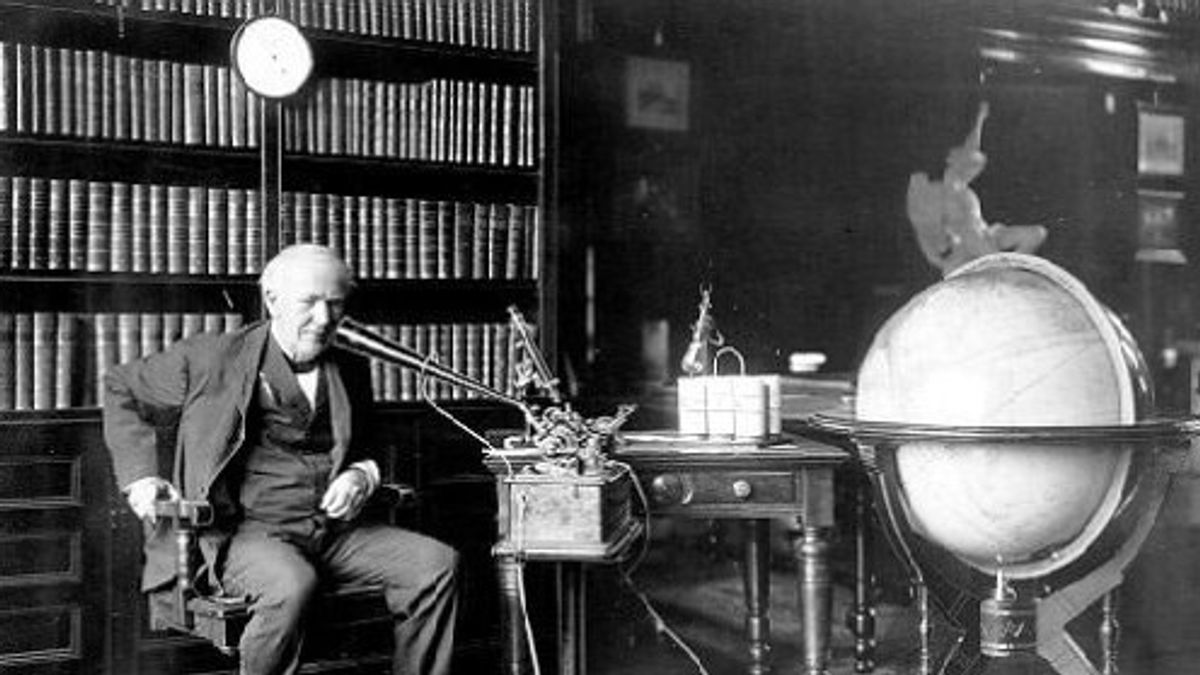JAKARTA - Thomas Alva Edison has 1,093 invention patents that he created during his life. The most well-known and still used today include: incandescent lamps; the first phonograph voice recorder; and image recorder. However, after all, not all of Edison's discoveries were successful, there were some that failed.
Edison was born in Milan, Ohio, United States in 1847. As told by History , little Edison did not receive a full formal education like other American children, because he had serious hearing problems. Because of his limitations, he often gets bad grades.
Therefore his mother stopped him from school and taught him at home. In his house, Edison was free to read adult scientific books and began to conduct small experiments.
At the age of 16, he got a job as a telegraph operator and soon devoted much of his natural energy and ingenuity to improving the telegraph system itself. In 1869, he decided to work as a full-time inventor.
When moving to Menlo Park, New Jersey, Edison took up work in the telegraph field. It was not until 1877 that he managed to find a tool for recording conversations on the telephone: the phonograph.

For this discovery, Edison was dubbed the "Witch of Menlo Park." Other inventions that made his name enduring were incandescent lamps and image recording devices.
However, until the time of his death, which is today 18 October 89 years ago or in 1931, Edison has never felt a failure. At one time he was also unable to solve the problem of the tools he made, and there were also some of his inventions that were not widely used.
Edison's failure
As summarized on the American Library page, there are several Edison innovations that have reached a dead end. The first is the concept of using cement to build everything.
In 1899 he formed the Edison Portland Cement Co. whose main product is to make goods from cement. Starting from household furniture such as cabinets, musical instruments such as pianos, and houses.
Unfortunately, at that time concrete was too expensive and the idea was never accepted. Cement wasn't a complete failure, his company was hired to build the Yankee Stadium in the Bronx.
Then since the early days of filmmaking, many people have tried to combine image and sound to make films that have a sound. Here we can see an example of an early film that tried to incorporate these elements by Edison's assistant WKL Dickson.
Then in 1895, Edison had created the kinetophone, namely the kinetoscope - a moving image viewer - combined with a phonograph that was played in a cupboard. So that sound can be heard through the two ear tube tubes as the audience watches the picture. This creation never really took off until 1915.
At that time Edison abandoned the idea of a sound film. And this is the second discovery of Edison including failed.
Third, the biggest failure of Edison's career was that he was unable to come up with a practical way to mine iron ore. In the 1880s Edison began developing mining methods. Then a decade later he began supplying the iron ore demand for steel mills in Pennsylvania.
To finance the mega project, Edison sold all of his shares in General Electric, the electricity distribution company he founded. But he could never make a separator that could extract iron from an unusable inferior ore. Finally, Edison gave up on the idea, and at the same time he had lost all the money he had invested.

The English, Chinese, Japanese, Arabic, and French versions are automatically generated by the AI. So there may still be inaccuracies in translating, please always see Indonesian as our main language. (system supported by DigitalSiber.id)










